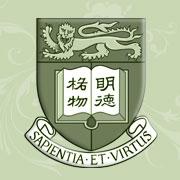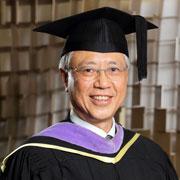
a milestone in the University's history.
To date, a total of 120 Endowed Professorships have been established.

 |
Lady Edith Kotewall Professorship in the Built Environment"The endowment for the Lady Edith Kotewall Professorship in the Built Environment will facilitate significant improvement in the research of the relationship between architecture and the environment. Lady Edith Kotewall, a woman of great inner beauty, loved to spend her days sitting in the garden admiring the view, the trees and plants and the few but beautiful buildings surrounding her home." "It is therefore a great honour for me that the Chair in the Built Environment should be given in my mother's name to recognise her passion in humanising our living environment." Mrs Helen Zimmern |
 |
Appointment to be announced |

David P Y LungAppointed in 2013
Architectural heritage tells the stories about the city's past and defines the city's character and identity. The future of historical buildings and the use of urban spaces are now in the public consciousness and are key parts of strategic urban planning. Professor David Lung has been the driving force behind the University's interdisciplinary effort to ensure that the historic built environment of Hong Kong is safeguarded so that our unique architectural heritage continues to define Hong Kong as an iconic Chinese global city, even as the contemporary city itself is continually transformed and renewed. He is internationally recognised for his scholarship and work in the field of heritage conservation and World Heritage properties. He was instrumental in bringing to fruition three World Heritage Inscriptions: Historic City of Macao, Kaiping Diaolou and Villages, and the Historic Cities in the Straits of Malacca. His many contributions have firmly established the reputation of the University as the region's leading institution in architectural conservation. In 2000, with the support of UNESCO, Professor Lung and his colleagues founded the Architectural Conservation Programme. This course was the first post-graduate degree course in Hong Kong to offer in-service training in architectural conservation. In 2010, he established the University's Architectural Conservation Laboratory. Linked to the international Association for Preservation Technology and serving China and Southeast Asia, this laboratory is the first purpose-build laboratory for the scientific examination of historic building materials established in Hong Kong. In 2012, he introduced a Bachelor of Arts degree in Architectural Conservation, the only such degree course offering in Hong Kong, thereby assuring the University's position as the leading institution for future professional development in the field. Reinforcing this commitment to the profession, under Professor Lung's visionary leadership, the Faculty of Architecture has been instrumental in establishing and hosting networks of conservation professionals, including the Asian Academy for Heritage Management, which brings together more than 60 universities and training institutions dedicated to conservation training and research from across Asia. Professor Lung has served on the jury panel of the UNESCO Asia-Pacific Heritage Awards for Culture Heritage Conservation. He was a member of the Hong Kong Antiquities Advisory Board (AAB) from 1989 to 2003 and served as its chairman from 1991 to 2003. During his tenure on AAB, some of the most important historical buildings of Hong Kong such as the Central Police Station have been safeguarded. He has also been involved with the Urban Renewal Authority (URA) and chaired the Central Oasis (Central Market) Advisory Committee on the adaptive reuse of the 1939 structure. This is the first time in Hong Kong that an historic reinforced concrete building will be preserved and reused for a different function. With the appointment of Professor Lung to the Lady Edith Kotewall Professorship in the Built Environment, the University will maintain and expand its role as a regional leader in both research and teaching in the fields of architectural conservation and the preservation of the built environment, spearheading the search for more sustainable strategies for managing the region's fast-expanding urban spaces with results that will be highly relevant not only for the future of Hong Kong, but also for the many rapidly growing cites of other parts of China, East and Southeast Asia. |